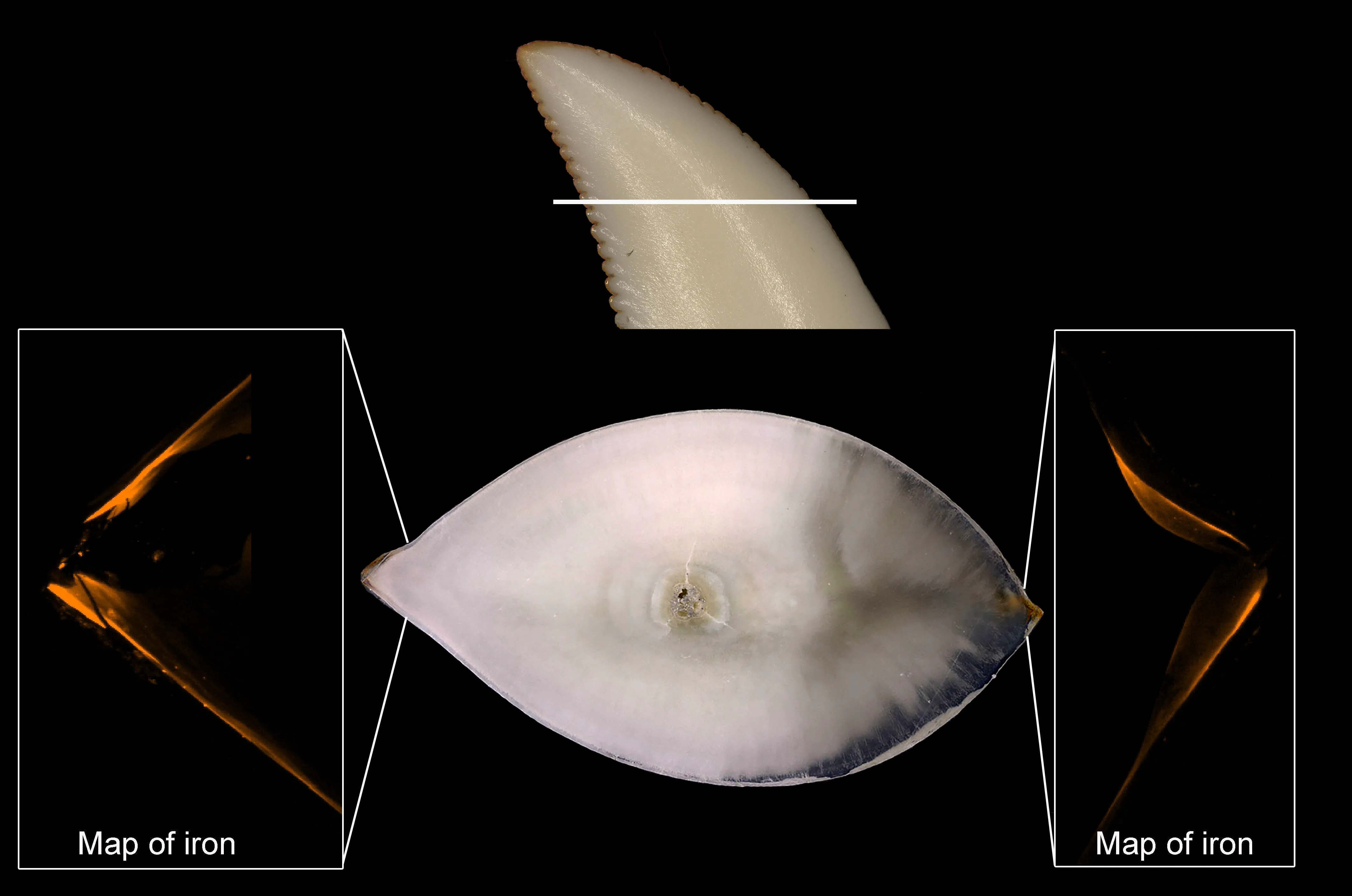Komodo dragons have curved, serrated teeth to rip and tear their prey just like those of meat-eating dinosaurs.
Dr Aaron LeBlanc, Centre for Oral, Clinical & Translational Sciences
24 July 2024
Komodo dragons have iron-coated teeth to rip apart their prey
Scientists have discovered that the serrated edges of Komodo dragons’ teeth are tipped with iron.
Led by researchers from King's, the study gives new insight into how Komodo dragons keep their teeth razor-sharp and may provide clues to how dinosaurs like Tyrannosaurus rex killed and ate their prey.
Native to Indonesia, Komodo dragons are the largest living species of monitor lizard, averaging around 80kg. Deadly predators, Komodos have sharp, curved teeth similar to many carnivorous dinosaurs. They eat almost any kind of meat, from smaller reptiles and birds to deer, horses or water buffalo, pulling and tearing at their prey to rip flesh apart.
The researchers discovered that many reptiles have some iron in their teeth, but Komodo dragons have concentrated the iron along the cutting edges and tips of their teeth, staining them orange. Crocodiles and other monitor lizards, by comparison, have so little that the iron is often invisible.

To understand the chemical and structural make-up of Komodo dragon’s teeth, scientists scoured museums for skulls and teeth of Komodo dragons and studied the teeth of Ganas, the 15-year-old Komodo dragon who had lived at ZSL conservation zoo, London Zoo.
Through advanced imaging and chemical analysis, the team was able to observe that the iron in Komodo dragons' enamel is concentrated into a thin coating on top of their tooth serrations and tips. This protective layer keeps the serrated edges of their teeth sharp and ready to be used at a moment’s notice.
The research, published today in Nature Ecology & Evolution, leads to new questions and avenues for research into how extinct species such as dinosaurs lived and ate.
"We want to use this similarity to learn more about how carnivorous dinosaurs might have ate and if they used iron in their teeth the same way as the Komodo dragon," said Dr LeBlanc.
"Unfortunately, using the technology we have at the moment, we can't see whether fossilised dinosaur teeth had high levels of iron or not. We think that the chemical changes which take place during the fossilisation process obscure how much iron was present to start with.
"What we did find, though, was that larger meat-eating dinosaurs, like tyrannosaurs, did change the structure of the enamel itself on the cutting edges of their teeth. So, while Komodo dragons have altered the chemistry of their teeth, some dinosaurs altered the structure of their dental enamel to maintain a sharp cutting edge.
"With further analysis of the Komodo teeth we may be able to find other markers in the iron coating that aren’t changed during fossilisation. With markers like that we would know with certainty whether dinosaurs also had iron-coated teeth and have a greater understanding of these ferocious predators."
Dr Benjamin Tapley, Curator of Reptiles and Amphibians at ZSL and co-author on the study said: "As the world’s largest lizards, Komodo dragons are inarguably impressive animals. Having worked with them for 12 years at London Zoo, I continue to be fascinated by them and these findings further emphasise just how incredible they are.
"Komodo dragons are sadly endangered, so in addition to strengthening our understanding of how iconic dinosaurs might have lived, this discovery also helps us build a deeper understanding of these amazing reptiles as we work to protect them."
King’s is investing in science teaching, talent and infrastructure to stimulate new discoveries that benefit society
In 2024, King’s announced a £45.5 million cross-university investment in science research, education and infrastructure. This transformational programme will accelerate growth, collaboration and innovation, enabling King’s to deliver solutions at the intersection of disciplines and respond to the world’s ever-changing needs.
Read more about Science at King’s at www.kcl.ac.uk/science

